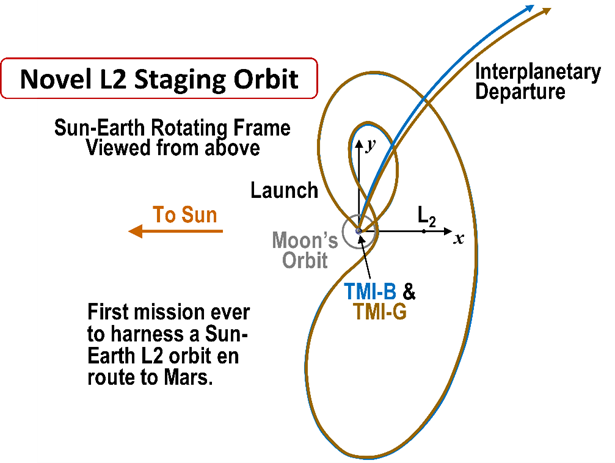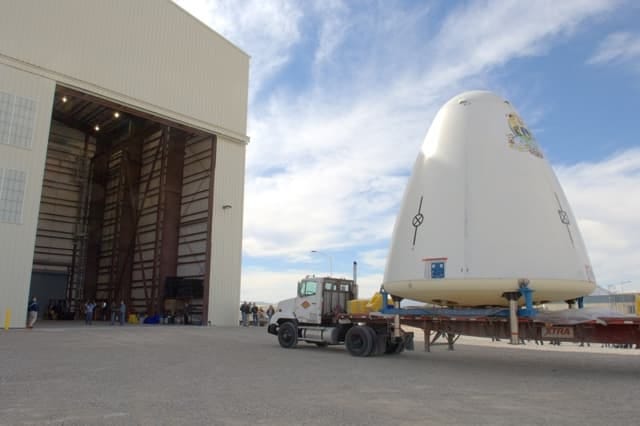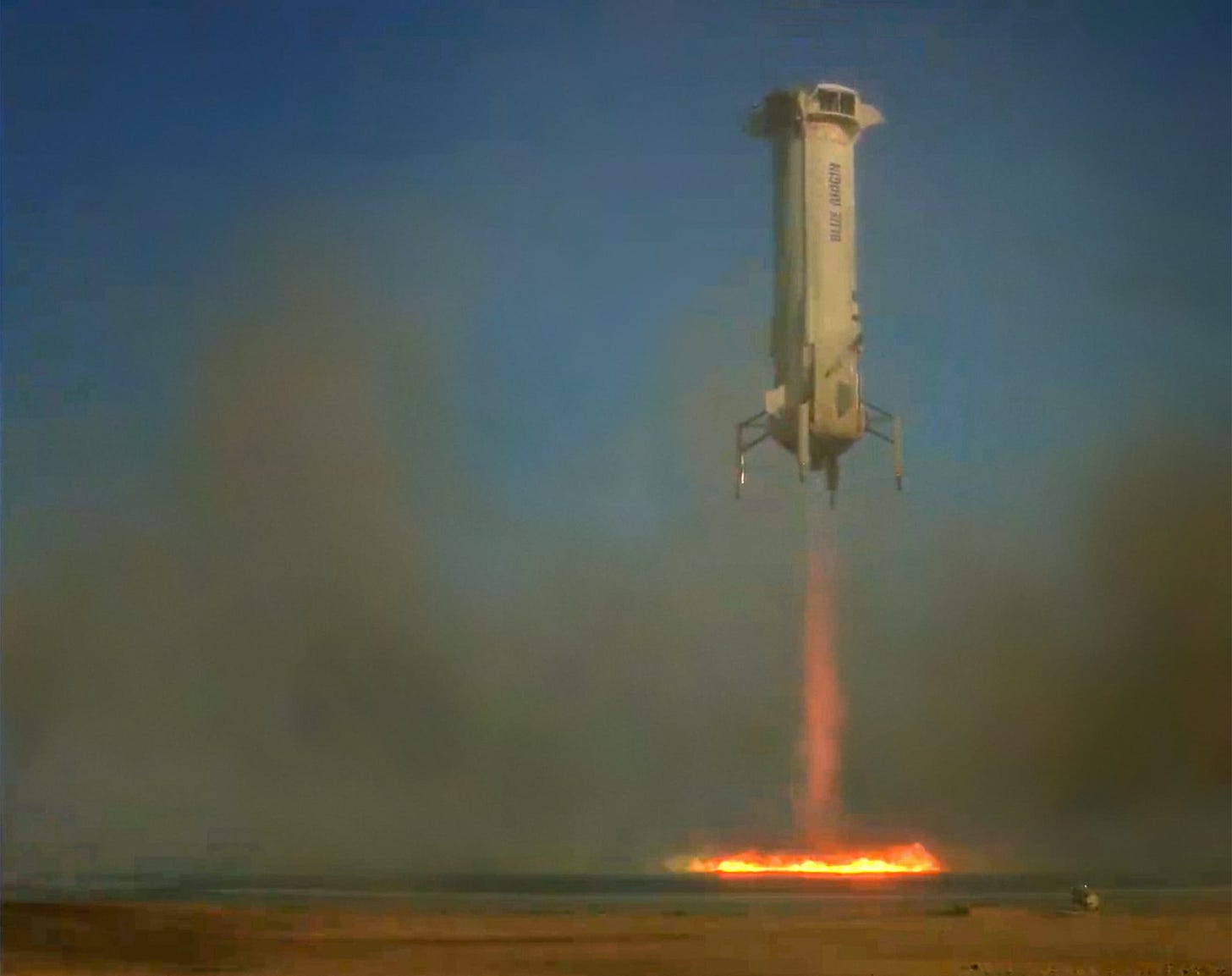Blue Origin, Red Destination
Jeff Bezos' Space Company is preparing to launch its first customer payload to orbit.
On Sunday, Blue Origin attempted to launch their New Glenn rocket for the second time. After some delays, and a series of holds on launch day due to weather and a wayward boat downrange, the launch was scrubbed as the window had run out.
There will be another attempt on Wednesday (12th of November). They will once again be attempting to recover the booster, which did not happen on the first flight - although that flight did successfully deploy its test payload.
This is an important flight for Blue Origin, as it will be the first time a customer payload is being flown. The payload, ESCAPADE, is a pair of spacecraft designed to study the magnetosphere of Mars, allowing simultaneous measurements of the dynamic system from multiple points at the same time, improving over previous single spacecraft missions.
Being a smaller planet than Earth, the core of Mars cooled faster, shutting down the dynamo process which generates its own magnetic field. Now the planet only has a “hybrid” magnetic field generated by the interaction between the solar wind, the atmosphere, and remaining magnet fields in the crust. In this process, the atmosphere of the planet has been stripped over geological time, leaving the surface barren. Learning more about this will inform both science, the radiation environment, and although not a specific objective, it could inform future terraforming by constraining models of atmosphere loss.
The Flight To Mars
Readers may be aware that we are not currently in an Earth-Mars transfer window. Originally, the two spacecraft were intended to be launched during the 2024 window, but delays to the rocket meant this opportunity was missed.
Having been rescheduled, a new trajectory was needed. The trajectory does in fact utilize the 2026 window, but does it in a roundabout way - New Glenn launched the spacecraft into an orbit around the Earth-Sun L2 point, which brings the probes back to Earth in November 2026, where they they launch into a conventional Mars transfer orbit.
The spacecraft do not need a huge amount of Δv to achieve this last manoeuvre. They will be approaching Earth with close to escape velocity, and when applying thrust at their closest approach can take advantage of the Oberth Effect, whereby velocity changes deeper in a gravity well have disproportionate impacts on orbital energy.
How this works is that the final velocity achieved after having escaped Earth - the hyperbolic excess velocity - is not simply how much the spacecraft exceeds escape velocity by when it is close to the planet. The derivation is a bit beyond the scope of this article, but briefly, the reason is that kinetic energy scales with the square of velocity, and energy is one of the things conserved between all parts of an orbit. The hyperbolic excess velocity is given by the formula:
meaning that small increments above escape velocity can result in large final velocities. For example, given an Earth escape velocity (in low orbit) of 10.8km/s, if the spacecraft could be accelerated to 11km/s, only a 200m/s difference, the hyperbolic velocity would be an order of magnitude larger than your Δv input at 2.1km/s.
If you want a physical intuition of why this might be the case, imagine a fast moving spacecraft moving out of the Earth’s gravity well. Every second it loses velocity inversely proportional to the square of the distance from Earth, and so if it has a higher initial velocity it spends less time close to the Earth, and suffers less gravity loss as it escapes.
In essence, this trajectory is a way of storing orbital energy until it can be used. It was driven by necessity of the readiness of the launch vehicle not lining up with the needed launch window, but we may see it used again to ease constraints. A similar concept shows up in the concept of a semi-cycler; a Mars cycler that enters loosely bound planetary orbits between cycles.
The Backstory
Blue Origin was founded in 2000, two years before SpaceX, and has taken a markedly different route to getting to orbit. For a long time, they were more like a research group than what you may think of as a commercial space company. By 2007 they had produced their first rocket powered vehicle, Goddard, which conducted small hop tests.
This early work led to the development of New Shepard - a fully resuable manned suborbital capsule. It first launched in April 2015, and on its second launch in November of that year made its first successful vertical landing. This was a month before the first Falcon 9 achieved a successful landing, leading to a brief testy exchange between Elon Musk and Jeff Bezos on what was then Twitter.
In 2016, the company announced New Glenn as their first orbital rocket, with a stated aim of launching it by 2020, alongside the Blue Moon lander and a broader mission to realise the space colonisation vision of Gerard O’Neill. Both vehicles faced considerable delays though - and although the company seems to have decisively won the race with Virgin Galactic for suborbital space tourism with New Shepard, their more ambitious programs lagged.
Between the first two flights, there was a headcount reduction and new leadership appointed for the New Glenn program. This is possibly an indication that Blue Origin has been restructured into the kind of organisation that can rapidly and reliably launch rockets to orbit.
Booster Reuse
When the first New Glenn flight attempted to recover its first stage booster in January, A problem with the engine relight during reentry led to its destruction and no landing was attempted.
New Shepard successfully performed a landing on its second attempt. Falcon 9 successfully performed an ocean touchdown on its second attempt, but it took five attempts at droneship landing to successfully recover the booster. Only the first of the four failed attempts failed to reach the droneship though - the others memorably landed hard or tipped over, leading to some impressive explosions that SpaceX later compiled into a blooper reel:
I predict that New Glenn will probably reach the droneship (or its near vicinity) in this next flight. It probably has a better chance than early Falcon 9’s did of landing gently and staying upright afterwards.
This is the end of the article. This one is free for all readers, but some of my work is for paid subscribers only. Upgrading gets you full access to articles like these:
The history and current state of the art of partial gravity research, important for building human colonies on Mars or the Moon.
How the threat of ASAT weapons and satellite constellation technology could lead to a militarisation of space.
…and many more, including my regular monthly Mass Value Report where I apply a unique analytical lens I developed in this paper to the launch and space industries.
To subscribe costs about the same as a cup of coffee every month. Would you buy me a coffee to hear a complete set of my insights each month?






